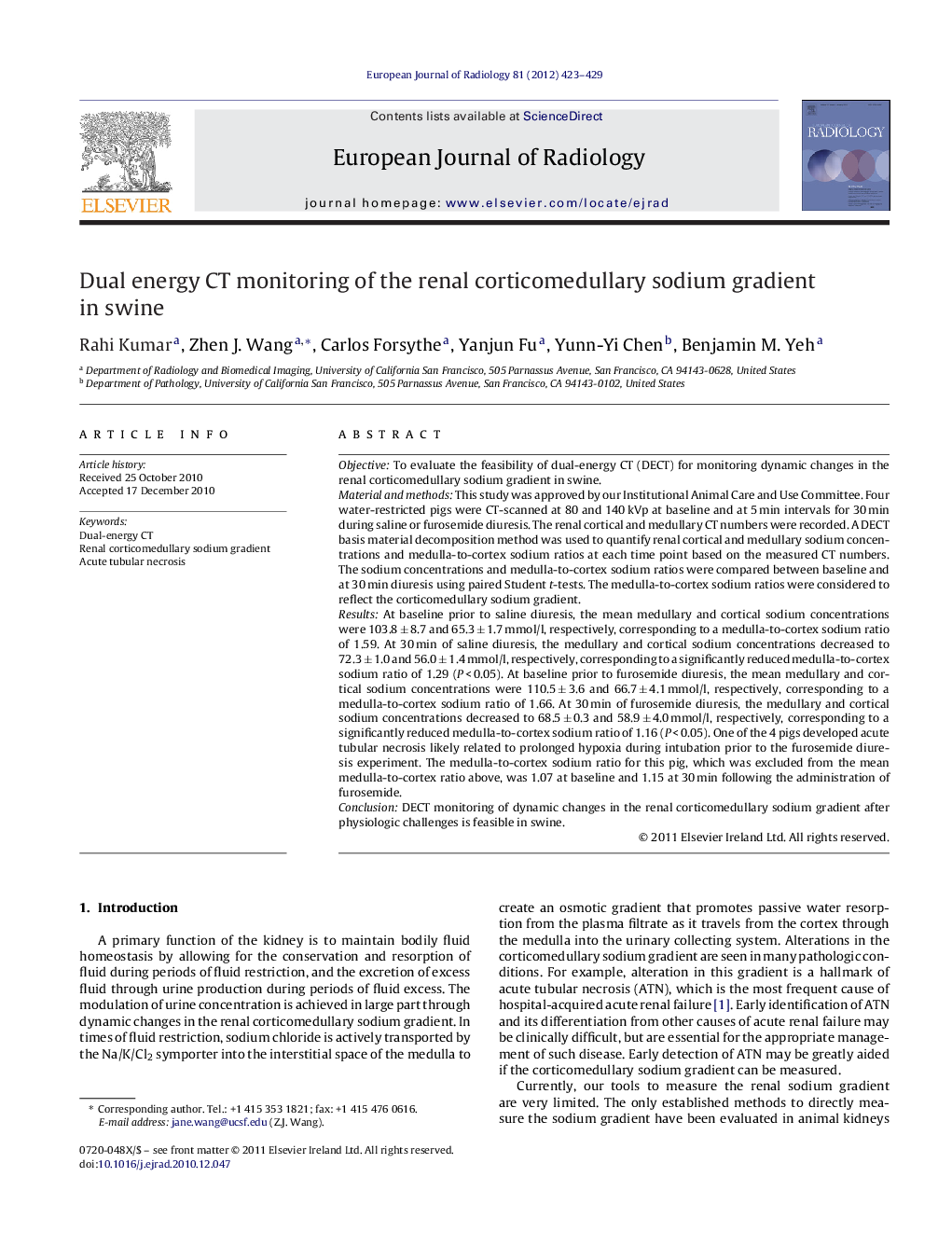| کد مقاله | کد نشریه | سال انتشار | مقاله انگلیسی | نسخه تمام متن |
|---|---|---|---|---|
| 4226429 | 1609792 | 2012 | 7 صفحه PDF | دانلود رایگان |

ObjectiveTo evaluate the feasibility of dual-energy CT (DECT) for monitoring dynamic changes in the renal corticomedullary sodium gradient in swine.Material and methodsThis study was approved by our Institutional Animal Care and Use Committee. Four water-restricted pigs were CT-scanned at 80 and 140 kVp at baseline and at 5 min intervals for 30 min during saline or furosemide diuresis. The renal cortical and medullary CT numbers were recorded. A DECT basis material decomposition method was used to quantify renal cortical and medullary sodium concentrations and medulla-to-cortex sodium ratios at each time point based on the measured CT numbers. The sodium concentrations and medulla-to-cortex sodium ratios were compared between baseline and at 30 min diuresis using paired Student t-tests. The medulla-to-cortex sodium ratios were considered to reflect the corticomedullary sodium gradient.ResultsAt baseline prior to saline diuresis, the mean medullary and cortical sodium concentrations were 103.8 ± 8.7 and 65.3 ± 1.7 mmol/l, respectively, corresponding to a medulla-to-cortex sodium ratio of 1.59. At 30 min of saline diuresis, the medullary and cortical sodium concentrations decreased to 72.3 ± 1.0 and 56.0 ± 1.4 mmol/l, respectively, corresponding to a significantly reduced medulla-to-cortex sodium ratio of 1.29 (P < 0.05). At baseline prior to furosemide diuresis, the mean medullary and cortical sodium concentrations were 110.5 ± 3.6 and 66.7 ± 4.1 mmol/l, respectively, corresponding to a medulla-to-cortex sodium ratio of 1.66. At 30 min of furosemide diuresis, the medullary and cortical sodium concentrations decreased to 68.5 ± 0.3 and 58.9 ± 4.0 mmol/l, respectively, corresponding to a significantly reduced medulla-to-cortex sodium ratio of 1.16 (P < 0.05). One of the 4 pigs developed acute tubular necrosis likely related to prolonged hypoxia during intubation prior to the furosemide diuresis experiment. The medulla-to-cortex sodium ratio for this pig, which was excluded from the mean medulla-to-cortex ratio above, was 1.07 at baseline and 1.15 at 30 min following the administration of furosemide.ConclusionDECT monitoring of dynamic changes in the renal corticomedullary sodium gradient after physiologic challenges is feasible in swine.
Journal: European Journal of Radiology - Volume 81, Issue 3, March 2012, Pages 423–429